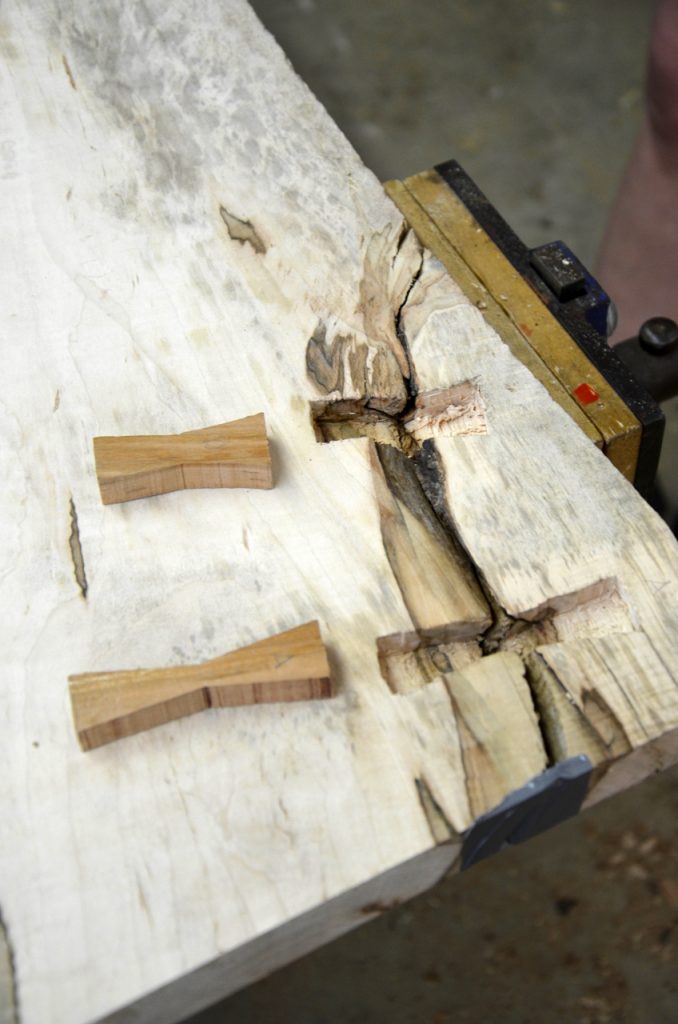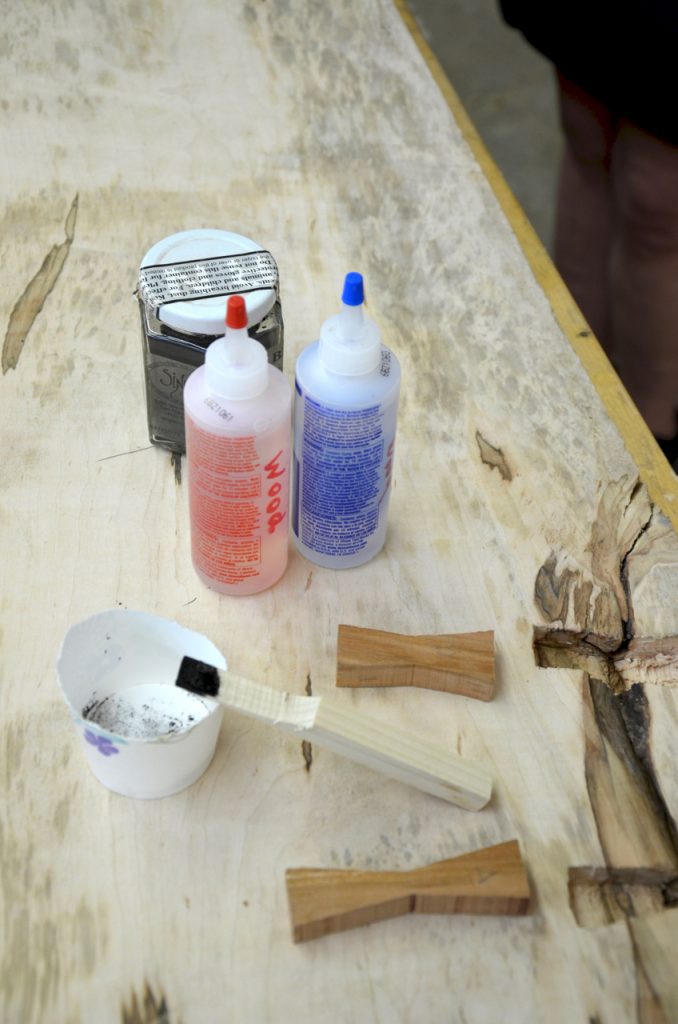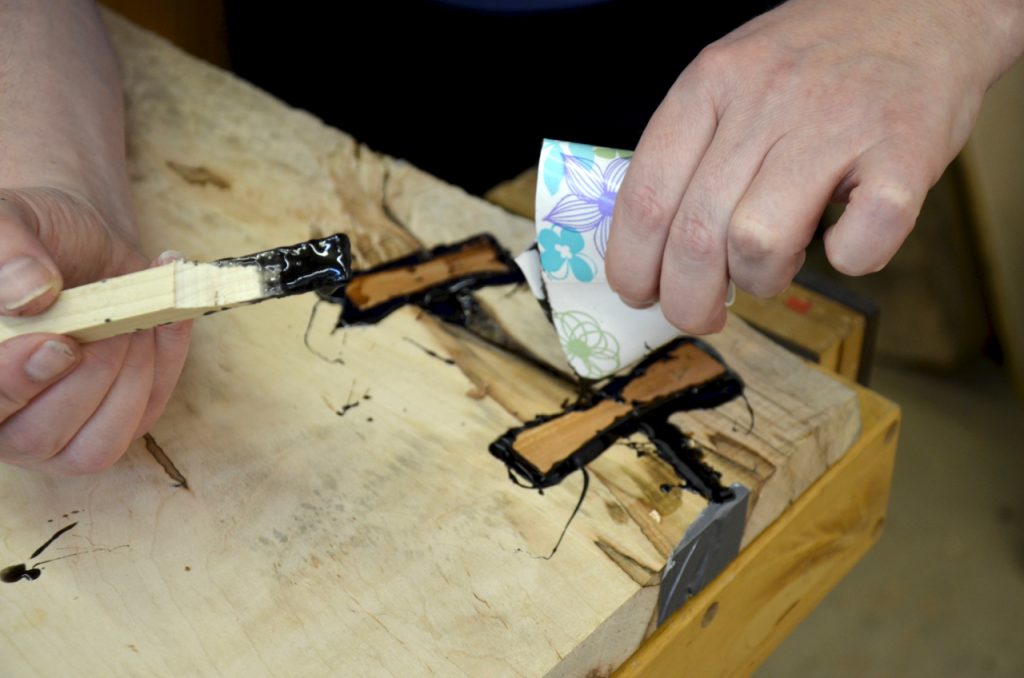We may receive a commission when you use our affiliate links. However, this does not impact our recommendations.
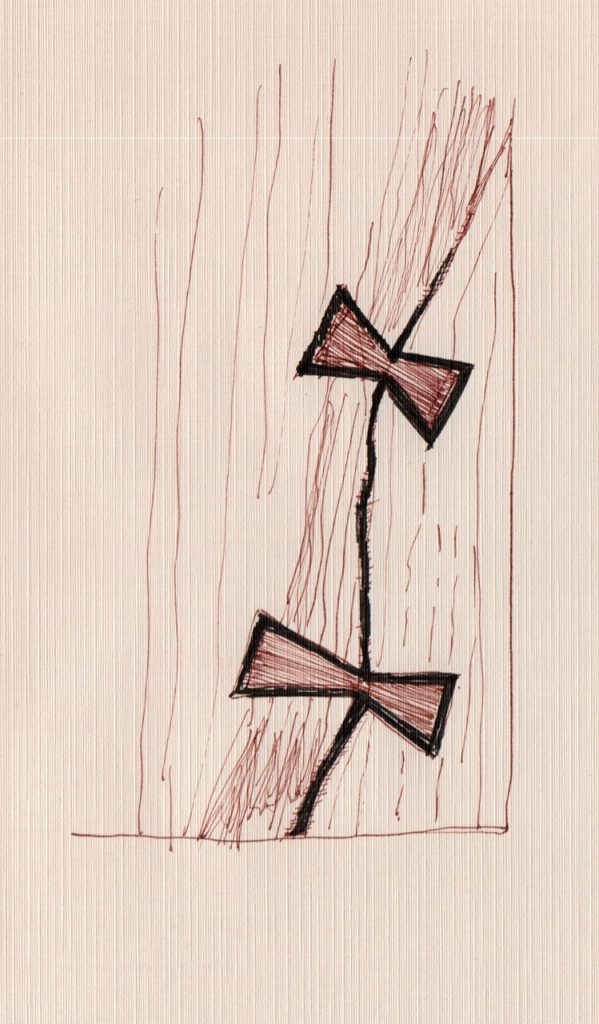 Live edge boards, like so many other organisms, can also suffer from stress. And while stress in humans can be mitigated with a moderate consumption of alcohol or a visit to the shrink (or both), inner-stresses in wood, which manifests themselves among other ways (cracks or splitting), need a mechanical remedy from a woodworker.
Live edge boards, like so many other organisms, can also suffer from stress. And while stress in humans can be mitigated with a moderate consumption of alcohol or a visit to the shrink (or both), inner-stresses in wood, which manifests themselves among other ways (cracks or splitting), need a mechanical remedy from a woodworker.
My student Christina’s live edge board was no stranger to splits or cracks, and since it was a beautiful live edge slab, we decided to arrest the splits via the tried and true application of a butterfly key.
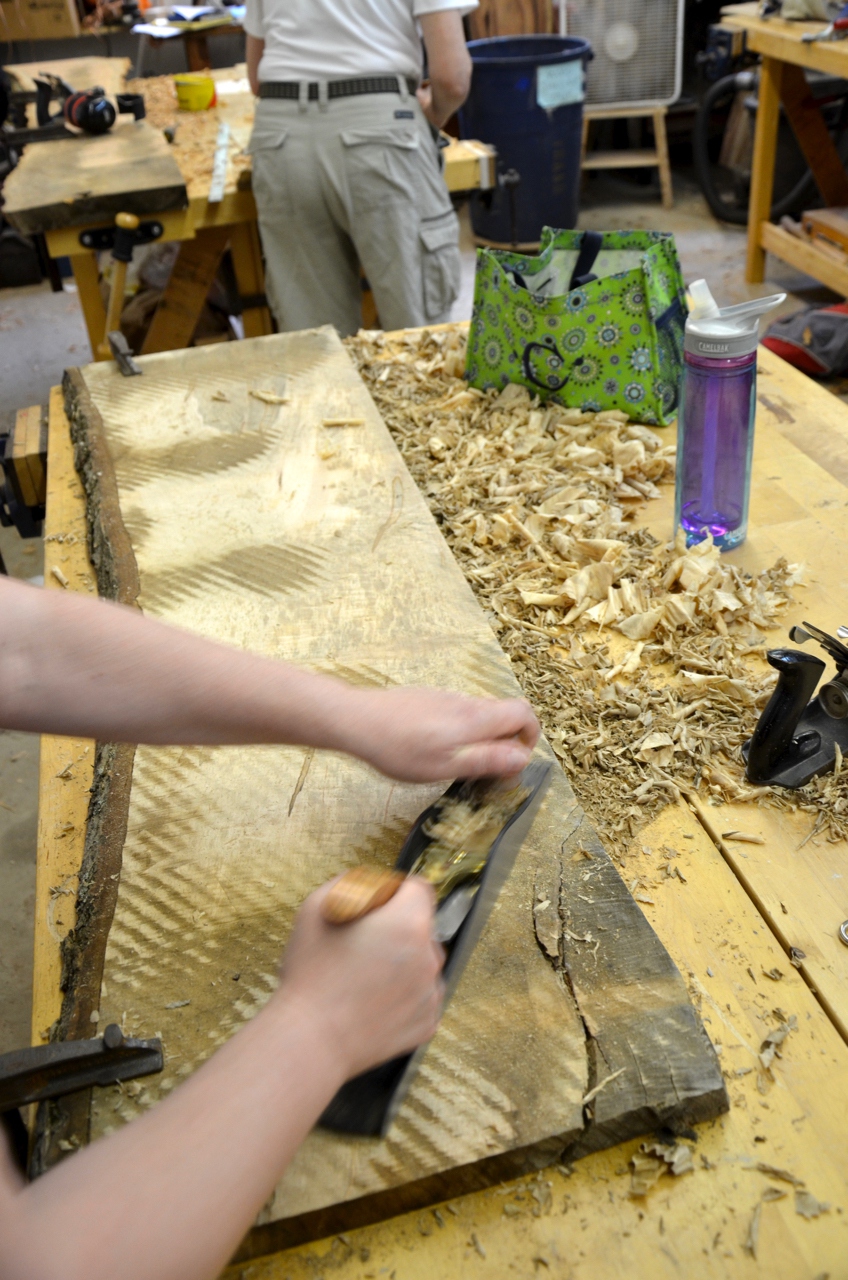
Christina planing her live edge slab. Notice the crack at the corner
Making the keys
The butterfly key is the most effective method to prevent a split from further opening. If you need one or two butterflies, just cut them with a handsaw or with a band saw. If you need many more, consider cutting them using a table saw.
Butterfly keys can be created in many shapes and forms. They can be made from contrasting color woods, they can be symmetrical or asymmetrical, stocky or thin. You, the maker, need to asses each situation and make an informed decision per the shape and size, the distance from the edge and the pacing of the keys from each other in case the split is long.
Embedding the keys
There are professional routing jigs to help in excavating a recess for the keys, but I prefer the drill and chisel method. After outlining the perimeter of the excavation with a marking knife passed against the key, I pick up a drill mounted with a Forstner bit and drill most of the excavation. Then, with a sharp chisel, I gradually clean the remaining wood out.
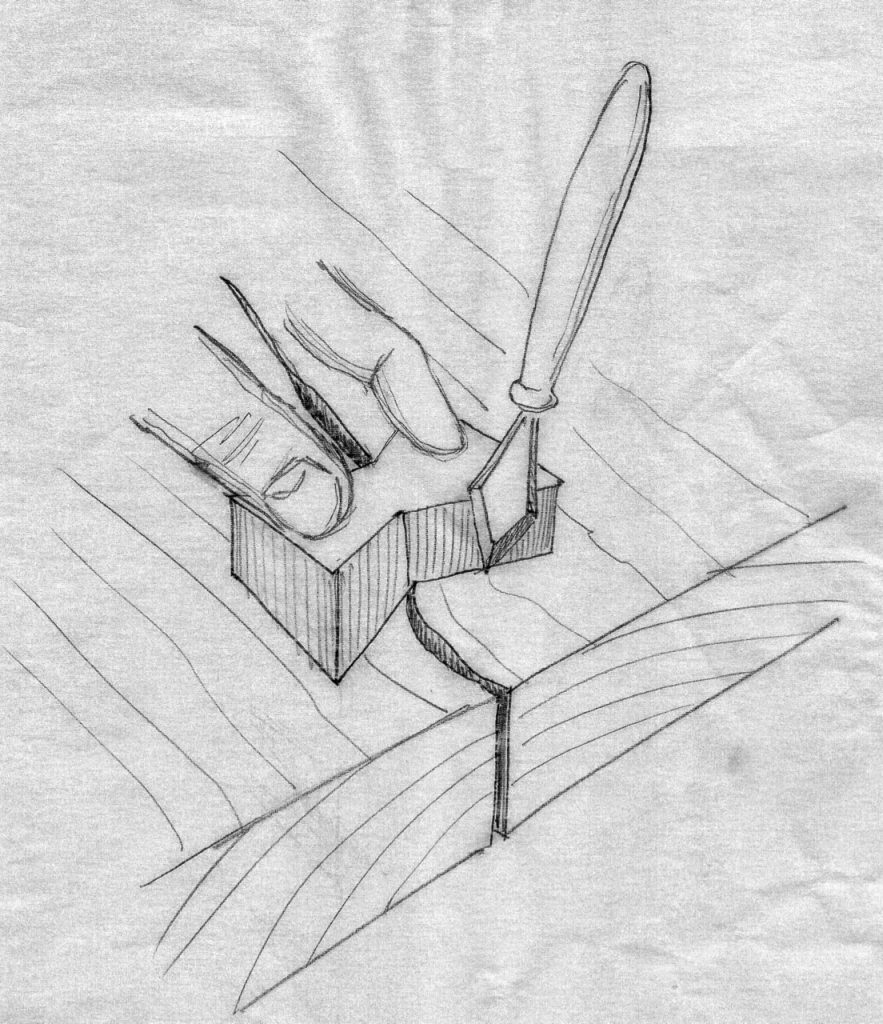
Outlining the parameter of the excavation with a marking knife.
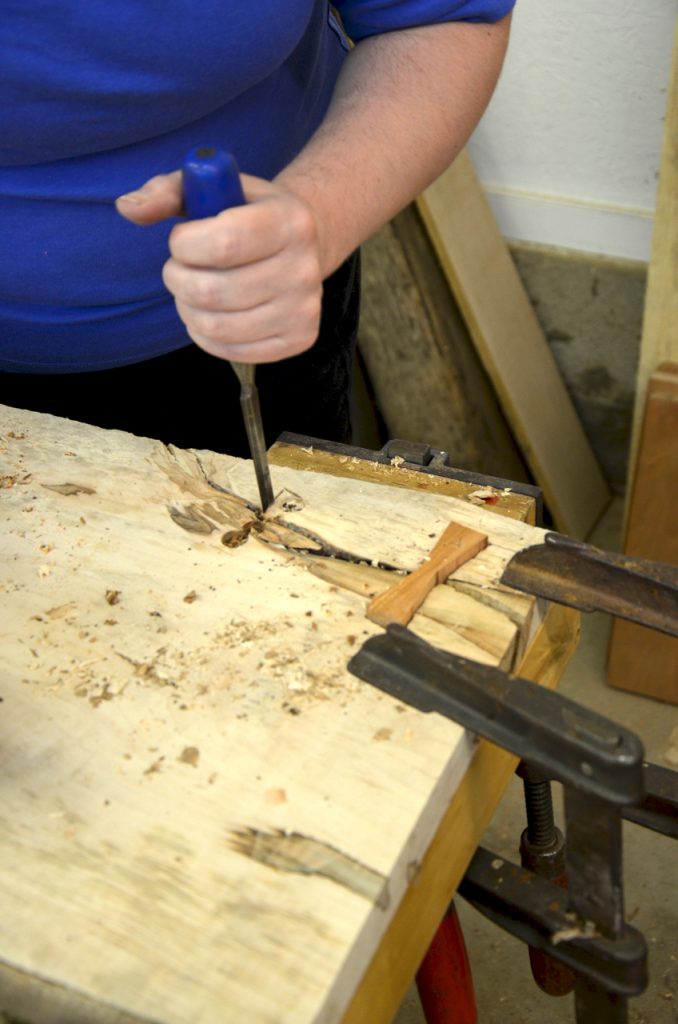
After forming the keys on the band saw she traced their perimeter on her slab and excavated the recess.
Gluing the keys
If you are new to this technique or to woodworking, don’t be too hard on yourself if on the first or second time you try it, your keys or excavations will turn out less than perfect. Luckily with the help of epoxy adhesive you will be able to fill any imperfections very easily. When using epoxy as a filler, I tend to recommend coloring the adhesive with some bold color rather then trying to camouflage the mistake by doctoring the adhesive with wood tone pigments, or even leaving the epoxy in its translucent state. I believe that most efforts to hide a mistake will fall short and instead show up clearly. My recommended approach is to make a decisive “design” statement so that people who will look at the key will conclude that you, the maker, reached a conscious decision to highlight the border of the key. To color the epoxy I use either a powder pigment or die suspended in alcohol.
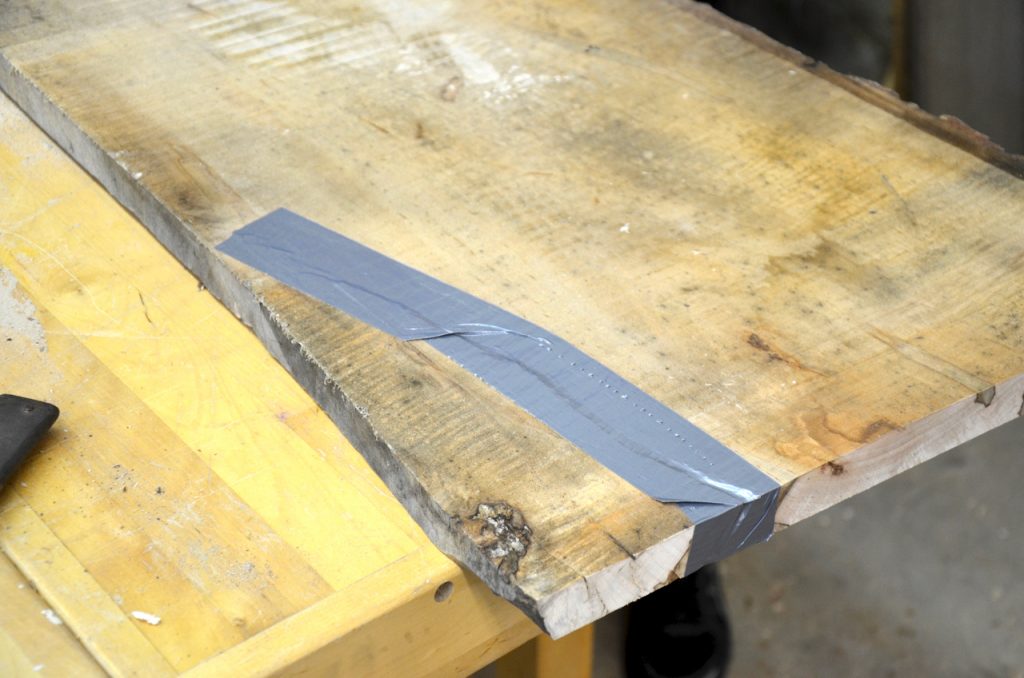
We sealed the under side of the crack with duct tape to prevent the epoxy from dripping to the floor.
Finishing up
After the epoxy cured, Christina sawed off the protruding part of the butterfly keys and sanded the slab. The slab is intended to be a coffee table sitting on two metal legs. I can’t wait to see the finished table.

The slab the its butterflies after a few coats of wipe on polyurethane.

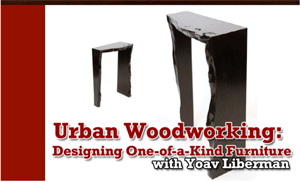 If you are interested in designing and working with live edge lumber, check out this previously recorded webinar from Yoav, “Urban Woodworking: Designing One-of-a-Kind Furniture” at shopwoodworking.com.
If you are interested in designing and working with live edge lumber, check out this previously recorded webinar from Yoav, “Urban Woodworking: Designing One-of-a-Kind Furniture” at shopwoodworking.com.
Here are some supplies and tools we find essential in our everyday work around the shop. We may receive a commission from sales referred by our links; however, we have carefully selected these products for their usefulness and quality.



